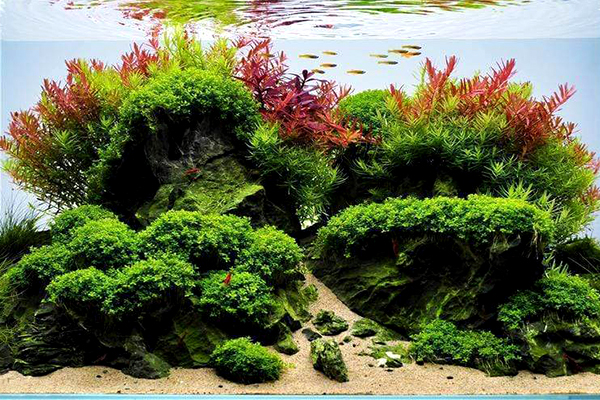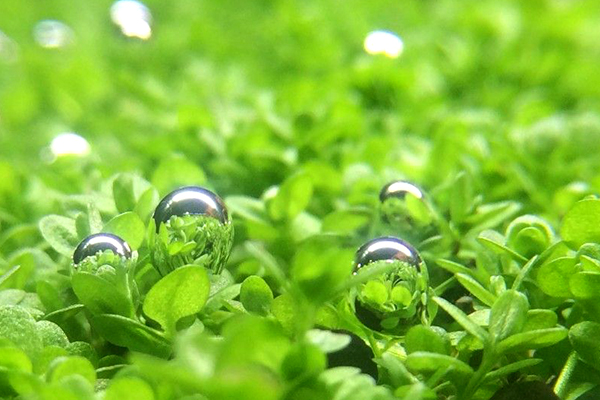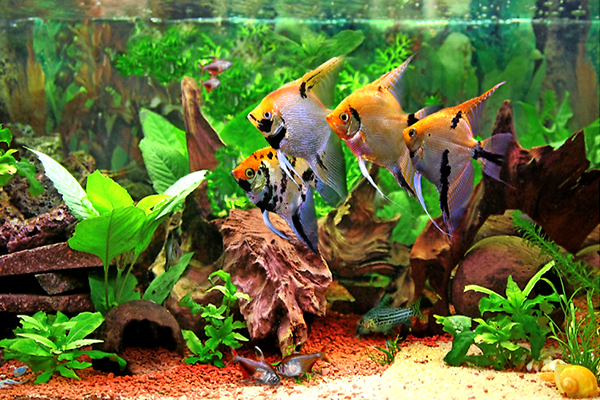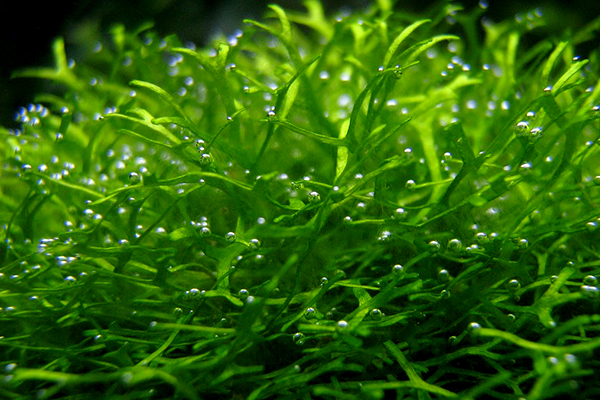By Senzeal | 08 November 2019 | 0 Comments
The Effect of Aquatic Plants on Water Quality
Estimated reading period: 3 minute
Article words: 473
Aquatic plants generally refer to herbs that can grow in water. Aquatic plants are physiologically attached to the water environment, and at least part of the reproductive cycle occurs in water or on water surfaces. Aquatic plants generally do not include small algae. Many fish keepers love to plant aquatic plants on aquariums. There are four main effects of aquatic plants on water quality.

Aquatic plants can produce oxygen and increase the dissolved oxygen content in our fish tank water. Oxygen is the basis for the survival of organisms in the aquarium. Aquatic plants produce a large amount of oxygen through photosynthesis, which is a natural aerator in the aquarium. The oxygen produced by photosynthesis can be effectively dissolved in water, thereby increasing the dissolved oxygen content in the water, and the effect is better than using a fish tank air pump valve to pump oxygen into the cylinder, and the fish is more adaptable to this.

Besides, aquatic plants can purify water and maintain water quality. The metabolites of fishes in the aquarium and the surplus feed will produce a lot of ammonia and nitrous acid after their decomposition. Ammonia and nitrous acid gradually become nitrates by the action of nitrifying bacteria. Nitrate cannot be re-decomposed and can only accumulate in the aquarium, thus causing deterioration of water quality. Most aquatic plants can absorb nitrates, which slows the accumulation of nitrates and maintains water quality.

Aquatic plants can kill bacteria and fight against pathogens. Aquatic plants can release high-efficiency antibiotics, kill pathogens such as E. coli in water, and reduce the content of microorganisms in water, thus facilitating fish survival rate. These antibiotics may come from the aquatic plant itself, or from the symbiotic bacteria in the roots of the aquatic plants. These antibiotics have the strong bactericidal ability.

Aquatic plants can absorb toxins and reduce water pollution. Aquatic plants not only absorb water, minerals and carbon dioxide from the water, but also absorb many organic substances, which include many toxic substances and pollutants, so aquatic plants can eliminate some harmful substances in the water. At present, some people have begun to study the use of aquatic plants to treat sewage. We have some easy planted aquatic plant seeds for you to choose from. They are very easy to grow and no need for CO2 nor strong light. Usually, they only need 10 days to grow up and can keep 2-5cm high. We suggest you can plant some beautiful aquatic plants in the aquarium. They can not only enhance the beauty of your fish tank but also purify your aquarium water. Aquatic plants have everything to gain and nothing to lose. For maintaining good aquascaping in your tank, you need suitable Plants Aquascaping Tools. It has 3-in-1 and 5-in-1 combination, containing straight tweezer, curved tweezer, straight scissor, curved scissor, sand shovel. They are very convenient to use.

You may also want to read:
What is the Green Algae Ball and How to Keep It?
Java Moss,One of the Easiest Aquatic Plant
The Temperature of Keeping Aquatic Plants
Different Kinds of Freshwater Angelfishes(1)
Article words: 473
Aquatic plants generally refer to herbs that can grow in water. Aquatic plants are physiologically attached to the water environment, and at least part of the reproductive cycle occurs in water or on water surfaces. Aquatic plants generally do not include small algae. Many fish keepers love to plant aquatic plants on aquariums. There are four main effects of aquatic plants on water quality.

Aquatic plants can produce oxygen and increase the dissolved oxygen content in our fish tank water. Oxygen is the basis for the survival of organisms in the aquarium. Aquatic plants produce a large amount of oxygen through photosynthesis, which is a natural aerator in the aquarium. The oxygen produced by photosynthesis can be effectively dissolved in water, thereby increasing the dissolved oxygen content in the water, and the effect is better than using a fish tank air pump valve to pump oxygen into the cylinder, and the fish is more adaptable to this.

Besides, aquatic plants can purify water and maintain water quality. The metabolites of fishes in the aquarium and the surplus feed will produce a lot of ammonia and nitrous acid after their decomposition. Ammonia and nitrous acid gradually become nitrates by the action of nitrifying bacteria. Nitrate cannot be re-decomposed and can only accumulate in the aquarium, thus causing deterioration of water quality. Most aquatic plants can absorb nitrates, which slows the accumulation of nitrates and maintains water quality.

Aquatic plants can kill bacteria and fight against pathogens. Aquatic plants can release high-efficiency antibiotics, kill pathogens such as E. coli in water, and reduce the content of microorganisms in water, thus facilitating fish survival rate. These antibiotics may come from the aquatic plant itself, or from the symbiotic bacteria in the roots of the aquatic plants. These antibiotics have the strong bactericidal ability.

Aquatic plants can absorb toxins and reduce water pollution. Aquatic plants not only absorb water, minerals and carbon dioxide from the water, but also absorb many organic substances, which include many toxic substances and pollutants, so aquatic plants can eliminate some harmful substances in the water. At present, some people have begun to study the use of aquatic plants to treat sewage. We have some easy planted aquatic plant seeds for you to choose from. They are very easy to grow and no need for CO2 nor strong light. Usually, they only need 10 days to grow up and can keep 2-5cm high. We suggest you can plant some beautiful aquatic plants in the aquarium. They can not only enhance the beauty of your fish tank but also purify your aquarium water. Aquatic plants have everything to gain and nothing to lose. For maintaining good aquascaping in your tank, you need suitable Plants Aquascaping Tools. It has 3-in-1 and 5-in-1 combination, containing straight tweezer, curved tweezer, straight scissor, curved scissor, sand shovel. They are very convenient to use.

You may also want to read:
What is the Green Algae Ball and How to Keep It?
Java Moss,One of the Easiest Aquatic Plant
The Temperature of Keeping Aquatic Plants
Different Kinds of Freshwater Angelfishes(1)
Leave a Reply
Your email address will not be published.Required fields are marked. *
CATEGORIES
- Aquarium Knowledge
- Aquarium Fishes
- Aquatic Plants
- Other Aquatic Creatures
- Best Aquarium Products
- Aquarium Light
- Aquarium Feeding Knowledge
- Fish Tank & Turtle Tank
- Aquarium Cleaning
- Fish Breeding
- Aquarium Heater
- Aquarium Filtration
- Planted Tank CO2
- Aquarium Decoration
- Shrimp Knowledge
- Aquascaping
- Algae
- Guppy
- Goldfish
- KOI
- Turtle
- Angelfish
- Betta
- Arowana
- Anemone
- Snails
- Fish Keeping
- Tropical
- CAT
- DOG
- BIRD
TAGS